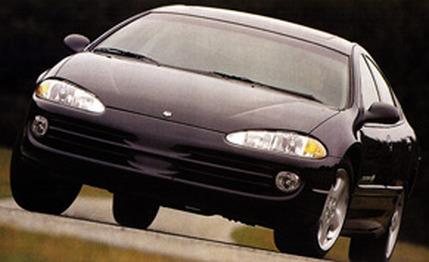
 Road Test
Road Test
Ah, the midlife crisis. Everyone suffers this clichéd psychological syndrome at some point after puberty and before the onset of dementia. The afflicted are often easy to spot. Any urban flatlander over 35 who's driving a Jeep Wrangler (especially with the doors off) -- now, that's a crisis. The guy who's invested in Grecian Formula and then buys a Britney Spears or *NSYNC CD for personal listening -- that's an acute crisis. Balding fat guys trying to learn snowboarding -- somebody call 911, quick! Other symptoms are far subtler, like joining a gym for reasons other than getting in shape.
Cars, often designed by middle-aged humans, can look as though they're going through midlife crises, too. Cladding and wings are sometimes slathered on to boost the appeal of a midyear model. Other automakers see fit to tamper with the stylist's original design, often at their peril -- to wit, the grille grafted onto the nose of the otherwise pristine Lexus SC.
Midway through the life of the current Dodge Intrepid, however, DaimlerChrysler has exercised exceptional restraint and added genuine performance without a trace of gauche surface excitement by introducing the R/T model. Indeed, the only exterior modifications are the badging, a chromed exhaust tip, and new five-spoke 17-inch wheels. No wild colors are offered.
This midlife makeover concentrates on the dirty parts, which makes it our kind of upgrade. The Intrepid R/T borrows from the best of Dodge history. The moniker R/T refers to "road and track" and was first applied to the 1967 Dodge Coronet two-door hardtop and convertible. By shoehorning the 375-horsepower (gross), 440-cube big-block or the optional 425-hp 426 Hemi V-8 from the full-size sedans into this lighter mid-size model, Dodge managed to offer a blistering low-six-second 0-to-60 performer for about $3200. The R/T name faded away with the killjoy emissions laws of 1972.
This time around, the tactics are similar. The somewhat lighter (though larger) Dodge Intrepid sedan gets the 3.5-liter engine, brakes, and anti-roll bars of the autobahn-bred Chrysler 300M. Rechristened "3.5 Magnum" in this incarnation, the engine's spark advance and fuel-injection timing are recalibrated to run on regular gas, which lowers the output to just 242 hp at 6400 rpm and 248 pound-feet of torque at 3950. That's still an eight percent power boost over the 3.2-liter Intrepid ES. The engine was detuned in part because Dodge felt its middle-class family owners might balk at paying for premium fuel, and in part out of deference to Chrysler's 253-hp, 255-pound-feet 300M and LHS flagships.
We're always in favor of more power, and what the computer chip taketh away, the aftermarket chip can certainly giveth back. But our test car suggests that may not be necessary. For starters, by simply fueling up with premium, the Intrepid will gain responsiveness and power under all driving conditions short of wide-open throttle. With the hammer down, though, the computer stops looking at knock sensors and other closed-loop controls and simply reads off a map of air and fuel parameters programmed for regular fuel, so no matter what gas you're running, maximum power will be somewhat less than in a 300M.
Nevertheless, our Intrepid R/T test car managed to slice a second or more off the acceleration of our last 3.2-liter Intrepid. Weighing 75 pounds less than our last 300M, it managed to stay 0.1 second ahead of the Chrysler to 60 mph (7.8 seconds) and through the quarter-mile (16.0 at 89 mph). Top speed for our sleek and slippery Dodge climbed to 139 mph -- a tick faster than that 300M. With that kind of performance, we'd be loath to switch chips and give up the option of running regular fuel during OPEC snits such as we're experiencing this spring.
We also like the subdued snarl of the R/T's sport exhaust, which makes itself known primarily above 2500 rpm but keeps quiet inside the car at idle and while cruising. Our sound-level meter ranked the Intrepid slightly more quiet than the 300M. But outside the car, the exhaust note draws attention at startup and idle.